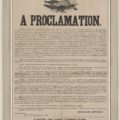Portuguese traders built sub-Saharan Africa’s first permanent slave trading post at Elmina in 1492.
It passed into Dutch and English hands and by the 18th century they shipped tens of thousands of Africans a year through ‘the door of no return’ onto squalid slave ships bound for plantations of the Americas.
European traders would sail to the west coast of Africa with manufactured goods which they exchanged for people captured by African traders.
The European merchants would then cross the Atlantic with ships full of slaves on the notorious ‘Middle Passage’.
Conditions were so torrid that many of the captors, who often had barely any space to move, did not survive the journey.
Those who made the voyage were destined to work on plantations that produced products such as sugar or tobacco for consumption back in Europe.
By the end of the 18th Century, campaigners called for the abolition of the trade, but this was fiercely opposed because it was so profitable.
After years of campaigning by anti-slavery activists like politician William Wilberforce, Britain banned the trade in slaves from Africa on March 25, 1807.
Slavery itself was not outlawed by Britain for another generation, in 1833, and the transatlantic trade continued under foreign flags for many years.
Some estimates say as many as 60million people were shipped into bondage.
Source: The Daily Mail UK















Follow Us